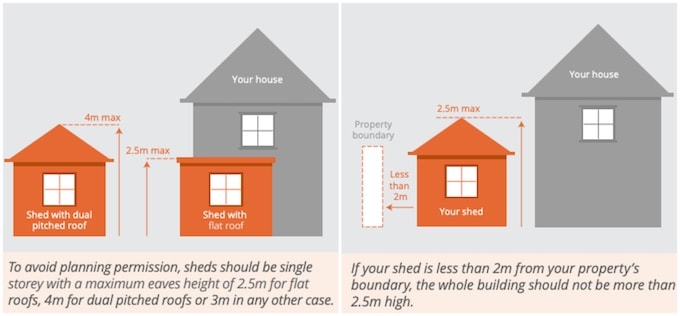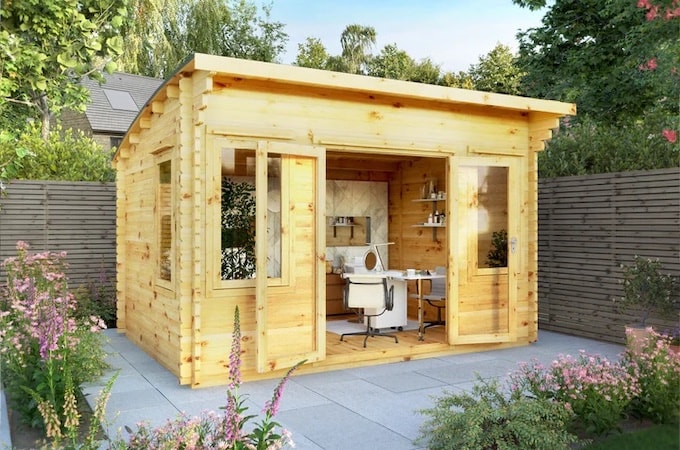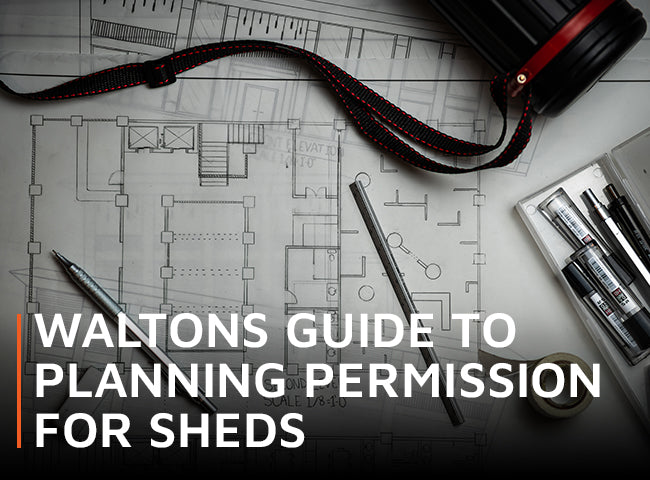Buying and building a shed in your back garden doesn’t normally require planning permission, but it’s still worth being aware of the law before you build.
If you own property or land and want to do building work, then you’re responsible for making sure anything you put up meets relevant planning rules and building regulations. If you don’t abide by the rules you could risk being forced to remove your shed or outbuilding. The best advice is always to discuss your intentions with the relevant local planning authority and building control services before starting work. To find your local planning department, enter your postcode on the government’s online Planning Portal.
Here’s our guide to making sure that your garden building stays on the right side of planning legislation.
Contents:
- The law
- Do you need planning permission?
- Exceptions to the rules
- Applying for planning permission
- Don’t forget about building regulations
- Quick summary
- More help
The law

Image: Shutterstock
Since 2008, outbuildings have been covered by ‘permitted development rights’, a type of planning classification which says that, as long as you abide by certain rules, you’re granted automatic planning permission without the need to make an application.
This rule applies to a host of outbuildings including sheds, greenhouses and garages, as well as other ancillary garden buildings like sauna cabins, kennels, swimming pools, ponds, and enclosures like tennis courts.
The main thing is that the outbuilding must be erected for a “purpose incidental to the enjoyment of the dwelling house.” That means building for residential uses like self-contained accommodation, bedrooms, bathrooms, or kitchens is not allowed without planning permission.
A storage shed is fine. Something to support a hobby like swimming, bowling or art is also fine, provided it meets height restrictions and doesn’t occupy more than half your garden. If the use of the proposed building is intrinsic to the functioning of your house, you need to get planning permission for it.
Do you need planning permission?

If you live in England or Wales, you will NOT have to apply for planning permission for your shed or garden room provided it meets the following criteria (all measurements are external):
- Not including the area occupied by the house, the shed does not cover more than 50% of the garden.
- Your shed is not located on land forward of a wall forming the principal elevation – not in front of your house.
- The shed is single storey with a maximum eaves height of 2.5 metres and a maximum overall height of 4 metres if it has a dual-pitched roof, or 3 metres in any other case.
- If the shed is located within 2 metres of the property’s boundary, the entire building is not more than 2.5 metres high.
- The shed has no veranda or balcony. Raised platforms such as decking should be no higher than 30cm from ground level
- The floor area does not exceed 15 square metres. (Up to 30 square metres may fall under permitted development providing that other conditions are also met).
- The shed is for domestic use only, by those who occupy the house and contains no sleeping accommodation.
It’s always worth double-checking the design of your shed meets the criteria for permitted development using the section about Class E structures in the government’s handy pdf guide. If in any doubt contact your local authority for clarification. Search online for ‘find my local authority’ if you’re not sure where to look.
Exceptions to the rules

Image: Shutterstock
As you might expect, there are always exceptions to the rules. Here are six of the most common reasons you might need to seek further advice:
1. Intended use of your shed
If you plan to install a bedroom or toilet in your shed or outbuilding, you should check whether you need planning permission to do so. Separate, self-contained living accommodation requires planning permission and also needs to meet current building regulations.
If you’d like to run a business from a home office in your garden, this normally entails a straightforward planning application, and shouldn’t be a problem unless there will be significant numbers of visitors coming and going.
You’re usually permitted to keep poultry, bees, pet animals, birds or other livestock in an outbuilding as long as it’s for the domestic needs or personal enjoyment of the occupants of the dwelling house.
2. Listed buildings
If you live in a listed building, you probably need Listed Building Consent for any building operations. If the development is on land immediately surrounding a listed building you probably need to submit a planning application for the work unless listed building consent has already been granted. Your local planning office will be able to advise you.
3. Designated land
Designated land includes world heritage sites, conservation areas, areas of outstanding natural beauty, national parks and the Broads. Within these protected areas the maximum total area of ground covered by any outbuildings, enclosures and pools situated more than 20 metres from any wall of the house must not exceed 10 square metres to qualify as permitted development. Other restrictions also apply, and again, it’s best to give your local planning department a call.
4. Woodland
If you own a piece of woodland that’s not attached to your house you may want to build a shed to store tools or equipment. You need to seek planning permission for any permanent structure. For details and advice, and further useful information, look at this practical guide about sheds in woodlands.
5. Scotland
Permitted development rules are stricter in Scotland, where you need planning permission if any part of your new building comes within one metre of a neighbouring property, or is more than 2.5 metres high. Find more details about the Scottish rules here.
6. Northern Ireland
The rules differ in Northern Ireland, including the permitted distance your proposed building can be from a road that passes by the back of your house. Check for clarification before you begin.
Applying for planning permission

Image: 4m x 3m Helios Curved Roof Log Cabin from Waltons
If you do need planning permission, or suspect you might, the first thing to do is to contact your local authority. Planning departments are usually very happy to chat through your plans and you won’t be charged for informal advice.
If you do need planning permission, you can apply to any local authority in England and Wales through the government’s Planning Portal. A planning application for a garden outbuilding currently costs around £200. Building Regulations consent costs from £200- £300 upwards.
Once you’ve submitted your planning application it usually takes 8-10 weeks for a decision to be made. If you’re sure your new building falls within the permitted development rules, you don’t have to apply for planning permission before erecting your building.
Don’t forget about building regulations

Image: The Cresswell 6m x 3m Insulated Garden Room with Veranda
Building regulations are minimum standards for design, construction and alterations to virtually every building. They’re developed by the Government and approved by Parliament.
You don’t normally need Building Regulations Consent for a basic shed or outbuilding provided it’s under 15 square metres and has no sleeping accommodation inside. For further advice check the Planning Portal’s advice on outbuildings here
For all builds, normal safety standards will apply especially if you’re planning to install electrical connections or a bathroom with mains plumbing. Check with a building control body if you’re not sure whether you need approval.
Quick summary

Image: 15ft x 10ft Premium Shiplap Apex Workshop from Waltons
As long as your shed is under 2.5m tall at the eaves, situated in your back garden away from property boundaries, and intended for a use that’s incidental to the enjoyment of your house, you probably don’t need planning permission to build it. But if you do get it wrong, the planning department can demand that you take the building down.
If you’re creating a bedroom, installing a WC, or hope to run a business from your garden shed then you probably do need planning permission. If you’re at all unsure, it’s definitely worth giving the planning department at your local council a call.
More help

Image: Waltons
Additional Resources
Find more information about garden buildings here:
For new sheds
Visit waltons.co.uk if you want a new shed. If you need help finding the best model for your garden, just call our friendly sales experts on 0800 029 1000.
Disclaimer
Please note that the content in this document does not constitute legal advice, and all planning permission decisions are dependent on local authorities. Please contact your local council for more information.



Share:
Do you need planning permission for your garden building - infographic
Overlap vs. Shiplap - What's the Difference?